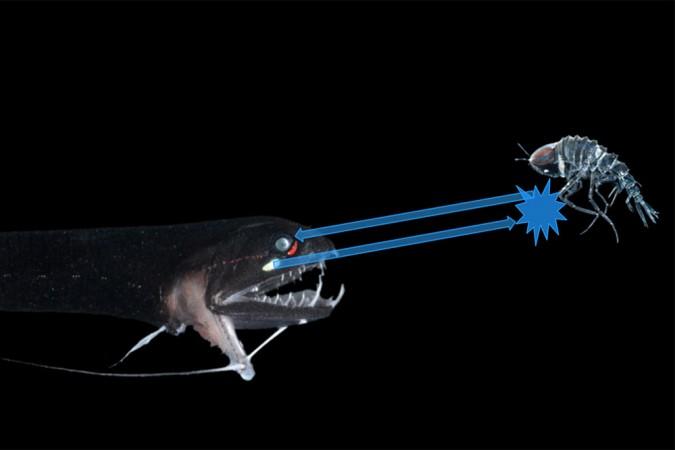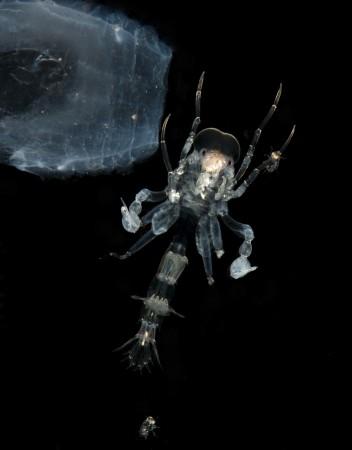Marine creatures have their own unique defence mechanisms, which they use to protect themselves from predators. While many of them have got the ability to camouflage and impersonate the sand at the bottom of the ocean, algae or corals, those living in the depths of the ocean have no place to hide, and turning transparent is the best camouflaging option for them.
A recent study by researchers at Duke University and the Smithsonian Institution discovered that the Crustaceans, mid-water hyperiid amphipods, have almost transparent bodies and possess the ability to be barely visible to their predators.
This amazing phenomenon takes place with the help of an anti-reflective coating present on their bodies. This coating has the ability to reduce the reflection of light up to 250-fold, which prevents it from bouncing back to the eyes of its predators.

The upward-looking predators of these mid-water hyperiid amphipods, like the species Cystisoma, also have some amazing characteristics. They have bioluminescent searchlights, which can make these almost transparent animals shine brightly. The shine is similar to that of a window pane when it is exposed to light.
Cystisoma is an arthropod, which means it's an invertebrate animal with an external skeleton. Researchers found these creatures to be remarkably invisible.
The lead author of this study, Laura Bagge, a Ph.D. candidate at Duke working with biologist Sönke Johnsen, found tiny spheres with a diameter of 50 to 300 nanometres coating these animals. Researchers guesstimate that the magical coating of Cystisoma is made up of living bacteria.
"This coating of little spheres reduces reflections the same way putting a shag carpet on the walls of a recording studio would soften echoes," Bagge told Duke Today. "They have all the features of bacteria, but to be 100 percent sure, we're going to have to perform an in-depth sequencing project."

Bagge explained that there might be a link between technological applications and the newly-discovered anti-reflective coatings. The tiny reflection depleting "nipple arrays" have been found in the eyes of moths, and aids in giving them an enhanced vision; they are also utilised for designing glass windows.














